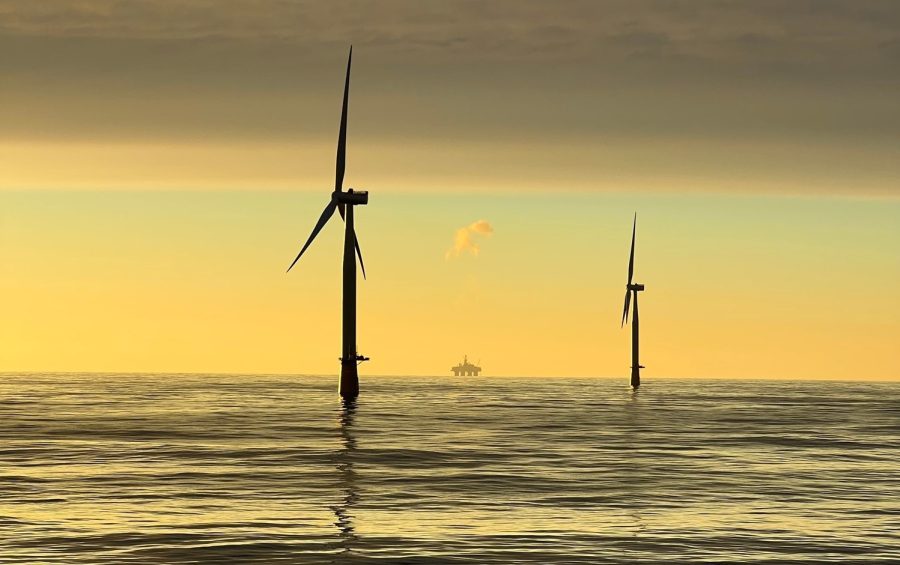The energy transition is without doubt one of the most complex issues of our time. An accelerated growth of renewable energy is needed to meet the challenge and floating offshore wind promises to play a significant role in the required move towards clean energy. Approximately 80% of the ocean’s wind resource potential is found in areas where the seabed is too deep for traditional bottom-fixed solutions; floating offshore wind provides flexibility.
This nascent industry is poised for explosive growth in the coming decade and, as highlighted in the February 2023 issue of TNA, naval architecture expertise will be crucial in the design, construction and offshore installation process. We are already seeing the emergence of floating offshore wind markets in a number of countries, with (amongst others) Norway, the UK, China, Japan, South Korea and the US all moving to grow the technology. Roughly 300GW of floating offshore wind will be installed globally by mid-century, requiring around 20,000 turbines, according to DNV.
In August, energy major Equinor’s 88MW Hywind Tampen project, dubbed the world’s largest floating offshore wind farm, was officially inaugurated by the Crown Prince Haakon of Norway. Located 140km off the Norwegian coast and in water depths of between 260m and 300m, the US$522 million project comprises 11 wind turbines based on Equinor’s floating concrete spar Hywind concept. The energy generated by the wind farm will be used, somewhat ironically, to power operations at five oil and gas platforms in the North Sea Snorre and Gullfaks fields. Around 35% of the platforms’ annual power needs is expected to be met, thus reducing emissions from the fields by approximately 200,000tonnes of CO2.
While the sharp contradiction of the project has not been missed by environmentalists, Equinor points to a bigger picture, stating: “Hywind Tampen will be an important test bed for further development of floating wind, exploring the use of new and larger turbines, installations methods, simplified moorings, concrete substructures and integration between gas and wind power generation systems.”
Also this summer, plans for floating offshore wind farm development in the Celtic Sea off the coast of Wales and South West England progressed a step further with the first in a series of Crown Estate-funded site surveys. The multi-million-pound programme includes plans for further surveys over the next two years which will see data collected on everything from wind and wave patterns to birds and marine mammals in the area. According to the Crown Estate, the studies will be made freely available to successful bidders to support their decision-making and future progress through the planning process.
The surveys follow the publication by the Crown Estate in July of the proposed locations of the wind farms, with four project sites set to deliver up to 4GW of floating wind capacity – enough to power around four million households.
Of course, if floating offshore wind is to fulfil its potential and reshape the energy landscape high levels of investment and political support will be needed.
In the UK, a recent report from The Floating Wind Offshore Wind Taskforce, which includes major offshore wind and port developers and other stakeholders, recommends the investment of £4 billion to upgrade ports for mass deployment of floating wind turbines by the end of the decade.
The taskforce notes that implementing some of its recommendations will result in the installation of 34GW of floating offshore wind in UK waters by 2040, generating up to £27 billion in additional gross value added and supporting 45,000 jobs across the country.
RenewableUK’s emerging technologies policy analyst, Laurie Heyworth, who worked on the report, remarks: “Getting onto the front foot to make the most of our enormous floating wind resource is essential to boost Britain’s energy security and deliver net zero as fast as possible. At the moment there are no port facilities in this country which are fit for the mass deployment of floating wind, so we need to start revitalising them now as new industrial hubs, so that we’re ready for this new sector to take off at scale by 2030. The timeline is tight and we will only be able to deliver on our ambition if we take action promptly and decisively.”
RINA will put an important spotlight on the fast-evolving floating offshore wind sector next month when it hosts the Offshore Wind Summit 2023 at the P&J Live in Aberdeen on 3 October. To be held in conjunction with the American Bureau of Shipping (ABS), the event is set to feature several keynote presentations from leading experts in the field. TNA looks forward to featuring some of the research and developments discussed at the event in a future issue.




